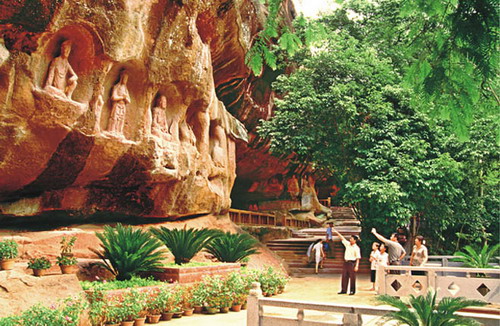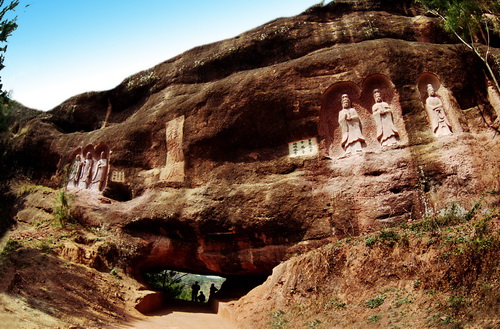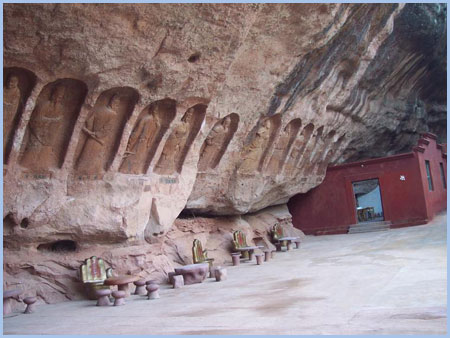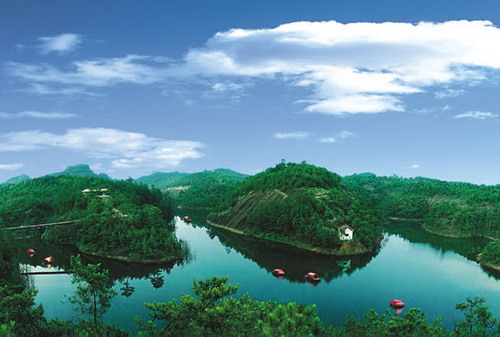Lofty Lushan Mountain
Temples in Hidden Places
On the First of August
Wheels by the Water
Share your travel story with regional@chinadaily.com.cn
Tongtian Grotto
( chinadaily.com.cn )
Updated: 2011-09-21
 |
| The stone sculptures niche of the Tang Dynasty |
|
|
Tongtian Grotto is one of the treasures of ancient art in South China.
Tongtian Grotto is an important heritage site under state protection, a national AAAA-level tourism destination, and a provincial level scenic spot. It is located 6.8 kilometers to the northwest of Ganzhou city, totaling six square kilometers. It has a unique Danxia landform and grotto culture.
The Danxia landform refers to various landscapes that "consist of a red bed characterized by steep cliffs". It is a unique type of petrographic geomorphology found in China. Danxia landform is formed from red-colored sandstones and conglomerates of largely Cretaceous age. The landforms look very much like karst topography that forms in areas underlain by limestones, but since the rocks that form Danxia are sandstones and conglomerates, they have been called "pseudo-karst" landforms.
Tongtian grotto was excavated in the Tang Dynasty (AD 618-907). It thrived during the Northern Song Dynasty (960-1127). To date, it has developed into the largest grotto temple in south China, with 359 stone niches of Tang and Song dynasties and 128 cliff inscriptions from the Song Dynasty to the Republic of China period. It is also the southernmost grotto temple in the country.
The main scenic spots of Tongtian Grotto comprise of a reclining Buddha on a 23.66-meter red cliff, a 9.99-meter white marble Avalokitesvara, Ganzhou celebrity statues of all ages, Buddha Cave, and Temple of God of Wealth. Tongtian Grotto is one of the treasures of ancient art in South China.
 |
| The reclining Buddha on a 23.66-meter red cliff |
 |
| The stone niches of the Song dynasty |
The scenic spot also contains Wanggui (forget to leave) Grotto, a fan-shaped rock cavern three meters high, five meters wide and ten meters long. People feel pleasantly cool and enjoy themselves so much they to forget to leave when entering the cavern during hot summer days. The cavern thus wins the name Wanggui- forgetting to leave. During the reign of Emperor Zhengde of the Ming Dynasty (1368-1644), Tongxin Grotto, also known as Dragon and Tiger Grotto, was discovered. The cavern is deep and spacious, capable of taking in 100 persons. The walls have 31 inscriptions, mainly engraved by people of the Song Dynasty. The cliffs at the entrance of Tongxin grotto are carved with one dragon and two tigers that look lifelike.
The new scenic area developed at the end of last century, with five leisure parks and one aquatic amusement park, is connected with Tongtian Grotto. It is a favorite destination among people who want to relax on holidays.
 |
|
To date, it has developed into the largest grotto temple in south China. |
 |
| Beautiful sceneries at the scenic area |





 Admission ticket price:
Admission ticket price: Tel:
Tel:  Website:
Website: